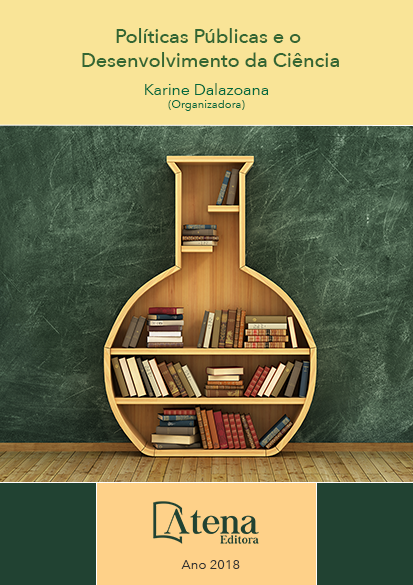
Concepções de alunos do Ensino Médio e Superior da cidade de Campos dos Goytacazes em relação ao conceito científico de lipídios
Os lipídios são macromoléculas
que além de serem responsáveis pelo sabor e
aroma dos alimentos, desempenham funções
básicas no organismo como a de reserva
energética. Podem ser classificados como
óleos e gorduras, possuem como componentes
majoritários os triacilgliceróis, sendo compostos
por ácidos graxos, que apresentam cadeias
saturadas ou insaturadas. A presença de
insaturações forma isômeros geométricos cis
e trans. Os ácidos graxos trans podem ser
produzidos por um processo de hidrogenação
catalítica, muito utilizados pela indústria
alimentícia. No entanto, o seu consumo em
excesso pode desencadear em diversas
doenças como obesidade, hipertensão, placa
de ateroma, etc. Com intuito de avaliar o
conhecimento dos alunos sobre o tema, este
trabalho investigou, por meio da aplicação de
questionários fechados, como os estudantes
das 1ª e 3ª séries do Ensino Médio (EM) e
do Ensino Superior (ES), antes (pré) e depois
(pós) de cursarem a disciplina de Bioquímica,
da Cidade de Campos dos Goytacazes (RJ),
compreendem os conceitos científicos relativos
à lipídios. Foram distribuídos 880 questionários,
destes, 321 para a 1ª série do EM e 277 para
a 3ª série; 282 estudantes do ES. E, de acordo
com os resultados da pesquisa, constatouse
que existem insuficiências no aprendizado
sobre os conceitos científicos relativos à lipídios
tanto entre os educandos do EM quanto os do
ES, provavelmente, a falha começa no Ensino
Fundamental e se propaga ao EM, fazendo
com que os educandos cheguem ao ES sem
o conhecimento mínimo necessário para
interpretar ao menos um rótulo de alimento.
Concepções de alunos do Ensino Médio e Superior da cidade de Campos dos Goytacazes em relação ao conceito científico de lipídios
-
DOI: 10.22533/at.ed.9561805127
-
Palavras-chave: Lipídios, Ácido graxo trans, Triacilgliceróis.
-
Keywords: Lipids, Trans fatty acid, Triacylglycerols.
-
Abstract:
The lipids are macromolecules,
that besides being responsible for the taste
and aroma of foods, perform basic functions
in the body as the energy reserve. They
can be classified as oils and fats, having
as main components, the triacylglycerols,
being composed of fatty acids, which have
saturated or unsaturated chains.The presence
of unsaturations forms cis and trans geometric
isomers. The trans fatty acids can be produced
by a catalytic hydrogenation process, widely
used by the food industry. However, their excessive consumption can trigger in several
diseases such as obesity, hypertension, atheroma plaque, etc. In order to evaluate the
students’ knowledge about the subject, this work investigated, through the application
of closed questionnaires, such as the 10th and 12th graders of High School and Higher
School, pre and post for studying the discipline Biochemistry in the City of Campos
dos Goytacazes (Rio de Janeiro, Brazil), and for understanding the scientific concepts
related to the lipids. A total of 880 questionnaires were distributed, of these, 321 with
the 10th graders of High School and 277 with the 12th graders; 282 with Higher School
students. And, according to the results of the research, it was found that there are
insufficiencies in learning about the scientific concepts related to the lipids both among
students of High School and those of Higher School, probably the failure begins in
Elementary School and spreads to High School, making the students reach Higher
School without the minimum knowledge necessary to interpret at least one food label.
-
Número de páginas: 15
- raquel miranda de souza nogueira sampaio


